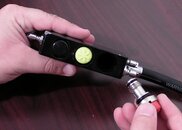We would like to suggest a solution. Tribolube EPO2 is an oxygen compatible corrosion coating system. This coating will halt corrosion of the wrenches, and will avoid the posibility of hydrocarbon contamination.
David,
In the above post you mention that this product will stop corrosion. I am wondering is applying it to a part that has already began (begun?) to corrode would halt the process. For instance, a part internal to a regulator or inflator like a chrome plated brass poppet (seat carrier) or inflator stem. Parts like these are subjected to salt water, then air, then half assed rinsed and left to dry.
How effective would EPO2 be in an application like that? Is there a permanent coating applied?
Thank you,
Couv




